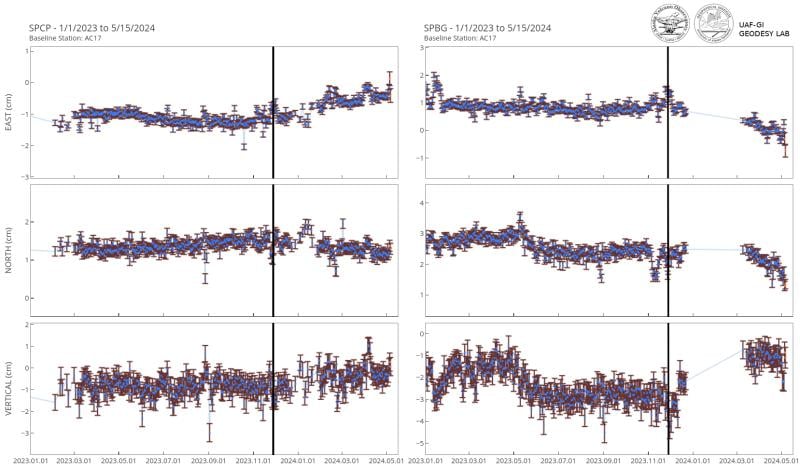Mt. Spurr, an impressive stratovolcano located in the Alaskan Range, stands as a testament to the geological forces that have shaped our planet. Known for its dramatic landscapes, rich volcanic history, and ecological significance, Mt. Spurr is not only a destination for adventurers and scientists alike but also a crucial element of Alaska’s natural heritage. This article delves into the geological features, historical eruptions, ecological impact, and the ongoing research surrounding this magnificent mountain.
Geological Features of Mt. Spurr

Mt. Spurr is characterized by its complex geological structure, which offers insights into volcanic activity and tectonic processes. As part of the Aleutian volcanic arc, it is one of the many volcanoes formed by the subduction of the Pacific Plate beneath the North American Plate.
Stratovolcano Composition
Stratovolcanoes are known for their conical shapes and layered composition, which typically consists of:
- Alternating layers of lava flows and tephra (volcanic ash and debris)
- Andesitic to dacitic lavas, which are intermediate in composition
- Explosive eruption history leading to significant formations of pyroclastic deposits
Mt. Spurr’s summit reaches an elevation of 11,070 feet (3,374 meters), making it one of the higher peaks in the Alaskan Range. Its summit features a large caldera, formed by the collapse of the volcano following a massive eruption.
Geological History
The geological history of Mt. Spurr is fascinating and complex, marked by numerous eruptions over thousands of years. The volcano last erupted in 1992, which provides a recent example of its activity:
- The 1992 eruptions began on June 27, producing a significant ash cloud that disrupted air travel in the region.
- Volcanic ash was deposited across several hundred miles, affecting local communities and wildlife.
- Monitoring efforts by the Alaska Volcano Observatory (AVO) have since improved, providing critical data for predicting future eruptions.
Prior to 1992, significant eruptions occurred in 1953, 1963, and 1987, showcasing the volcano’s active nature. The 1963 eruption was particularly notable for its explosive characteristics, producing large ash clouds that impacted aircraft safety.
The Ecological Significance of Mt. Spurr

Beyond its geological marvels, Mt. Spurr plays a vital role in the surrounding ecosystem. The diverse habitats created by its varied elevations and volcanic soils support a wide range of flora and fauna.
Biodiversity
The area around Mt. Spurr is home to a rich tapestry of plant and animal life:
- Alpine tundra species, including various mosses, lichens, and flowering plants.
- Forests composed mainly of spruce and hemlock trees at lower elevations.
- A variety of wildlife, including moose, black bears, and numerous bird species.
This biodiversity is partly facilitated by the nutrient-rich soils produced by volcanic activity, which enhance the growth of vegetation. However, the harsh climate and extreme weather conditions pose challenges for survival.
Impact of Eruptions on Ecology

Volcanic eruptions significantly impact local ecosystems, both positively and negatively:
- Post-eruption landscapes can initially appear barren but gradually recover as new soils form.
- Ash deposits can enrich the soil, promoting new growth and altering the landscape.
- However, eruptions can also lead to habitat destruction, affecting local wildlife populations.
The long-term ecological recovery following an eruption is a subject of ongoing research, providing insights into resilience and adaptation in natural systems.
Research and Monitoring at Mt. Spurr
Scientific interest in Mt. Spurr has led to extensive research and monitoring initiatives aimed at understanding its geological behavior and ecological dynamics.
Alaska Volcano Observatory (AVO)

The AVO plays a pivotal role in monitoring volcanic activity across Alaska, including Mt. Spurr. Their activities include:
- Real-time monitoring of seismic activity, gas emissions, and thermal imaging.
- Regular updates and alerts for aviation safety, critical for managing air traffic in the region.
- Collaboration with local communities and governments to prepare for potential eruptions.
Through these efforts, the AVO has significantly improved our understanding of volcanic behaviors and the associated risks.
Ongoing Research Initiatives
Researchers continue to explore various aspects of Mt. Spurr:
- Studying the impact of climate change on volcanic activity and its ecological consequences.
- Investigating the relationship between volcanic eruptions and atmospheric changes.
- Examining the geological history through rock samples and core drilling.
This research not only enhances our understanding of Mt. Spurr but also contributes to broader scientific discussions on natural hazards and environmental change.
Adventure and Tourism at Mt. Spurr
Mt. Spurr’s breathtaking landscapes and unique geological features attract adventurers and tourists looking for outdoor activities. The region offers opportunities for:
- Hiking and mountaineering, with various trails leading to stunning vistas.
- Wildlife viewing, where visitors can observe animals in their natural habitats.
- Photography and nature exploration, perfect for capturing the beauty of the Alaskan wilderness.
Despite its remote location, the allure of Mt. Spurr continues to draw visitors, supported by the surrounding natural beauty and the thrill of exploring an active volcano.
Mt. Spurr serves as a remarkable example of the dynamic processes that shape our planet. From its complex geological structure to its ecological significance and ongoing research, the volcano stands as a symbol of the power of nature. As scientists continue to study its eruptions and their impacts, and as adventurers seek to explore its majestic heights, Mt. Spurr remains a pivotal part of Alaska’s rich natural heritage. Understanding and preserving this geological marvel is not only crucial for the local ecosystem but also for future generations who will continue to be inspired by its beauty and power.


